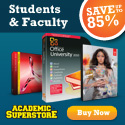WEB160 » Designing Personalized Content
Personalization of content sounds simple enough. Let’s write about things & ideas that the reader wants to hear about, right? Easier said than done.
In the world of print, generally we organize a document as a whole giving the reader what we want to give them and in the flow we feel appropriate. In the world of the web we find this not to work and must give the reader what they want and how they want it.
Objects & Chunks
We find ourselves developing content for the web in objects that the reader can access quickly and easily. These objects, also called chunks of information, need to be served up on demand tailored for the niche audience coming to our site.
This way of looking at information forces the web writer to take apart whole documents and break them down into components to reassemble on the web. We can then communicate the whole, but need to do so through personalization of content – delivering just the pieces that the user wants without all of the extra details they want to avoid.
Structure & Navigation
Our readers may feel like they are following an erratic path that goes forward, back and sideways—all the while wondering, “Have I come to the right place?”
Because the reader will access our content through navigation, we need to consider the context of their needs in regards to the larger structure of the site itself:
- Navigation will offer an idea of the structure of the site and will satisfy their question of, “Where is the topic I am interested in?”
- Content should also encourage and guide the activity of the user within the contextual means of our site—user path
By guiding the reader along a well structured and easily identifiable path they will find their topic of interest much easier:
Tone
On the intermet, people are looking for interactivity, personal attention and a social community that they can access from their computers. The attitude and tone toward your audience will either be encouraging to the user or will turn them off from coming back for a second or third visit—remember your user profiles!
By considering their needs and trying to answer their questions we will provide the user with a personal relationship with us, the writer. Fake and condescending attitudes will simply repel the user.
Attention
Our clients or employers (that are paying us to write their website for them) are expecting that our work will win the attention of the users, resulting in more traffic, purchases and overall hits. We need to continue to understand our audience and keep their attention. This is an ever evolving process – which means we need to see them as individuals in that niche group that the are.
We will get the user’s attention by simply writing about topics that our users are looking for—why the user is there in the first place.
By making our content scannable and by putting key terms in appropriate places we will let the user know we are also paying attention to them. Avoiding distracting visitors with off-the-topic text will let the user keep their focus on what they are here to see.
Through biography and discussion of revealing what the company or organization is all about we will raise the interest of the reader in our company or organization.
Answers, Answers, ANSWERS!!
Usually the user is coming to your website to answer their questions they have or will have once they view your site. As the reader scans your webpage they will expect that a menu item or a headline will point them to the answer in a direct and to the point fashion.
They ask, you answer:
- What might be some typical questions the potential user might ask about your site’s business or organization?
- What are the answers your client should provide to the users’ questions? (Answer the questions you described above as this will eventually become “content.”)
See Also:
- Project Scope | Carol Tompkins
- Project Scope | Metropolitan Pilates
This portion of the Premium Design Works website is written by Mike Sinkula for the Web Design & Development students at Seattle Central College and the Human Centered Design & Engineering students at the University of Washington.















Social